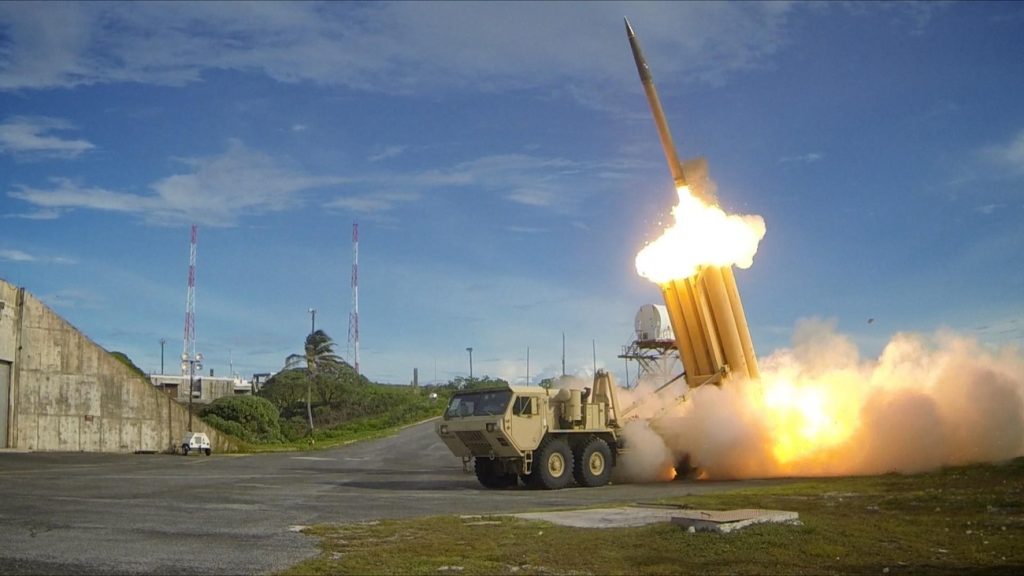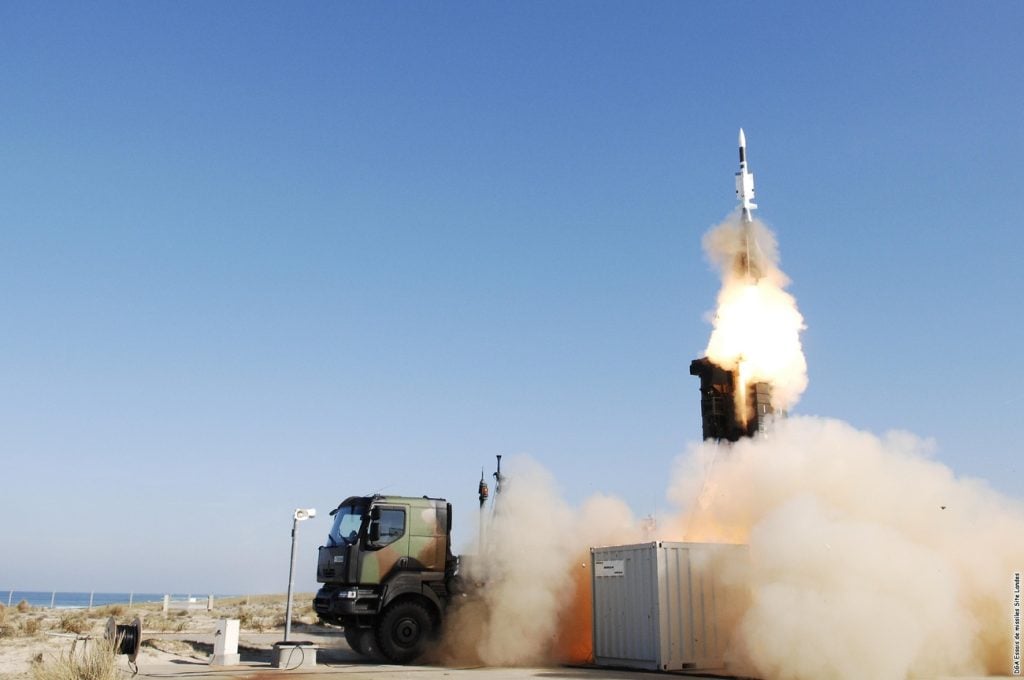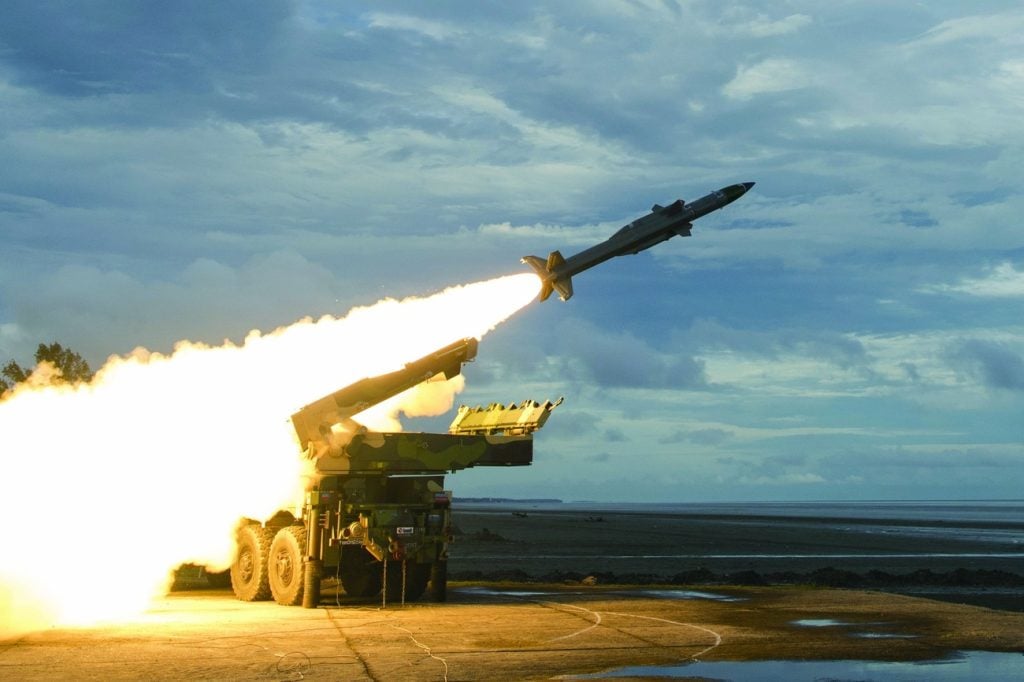Top 10 Air Defense Systems in the World 2024
From the sophisticated network-centric operations of the MEADS, developed cooperatively by the USA, Germany, and Italy, to the mobile precision of Israel’s Iron Dome and the formidable range of Russia’s S-400 Triumph, these systems reflect a profound commitment to safeguarding national security against diverse and evolving aerial threats.

In an era where aerial threats have evolved dramatically, the importance of robust air defense systems has never been more critical. Nations around the globe are investing heavily in advanced technology to protect their skies from potential aggressors. From intercepting incoming missiles to neutralizing enemy aircraft, the best air defense systems are pivotal in maintaining national security and ensuring peace.
As we look toward 2024, understanding the capabilities and strategic advantages of these systems becomes essential in the ever-changing landscape of global defense.
This article will explore the top 10 air defense systems projected to dominate the battlefield in 2024, including renowned names such as the S-400 Triumph from Russia, THAAD from the USA, Iron Dome from Israel, and the European Aster 30 SAMP/T.
Additionally, innovative collaborations like the Barak-8, developed jointly by Israel and India, and the MEADS, a collaborative effort between the USA, Germany, and Italy, highlight the importance of international partnerships in advancing air defense technologies.
From the MIM-104 Patriot’s enduring presence on the battlefield to the cutting-edge capabilities of systems like David’s Sling and the S-300VM, this roundup provides a comprehensive insight into the sophisticated world of air defense.
S-400 Triumph (Russia)
S-400 Triumph Overview
The S-400 Triumph, developed by Russia’s Almaz-Antey and known to NATO as the SA-21 Growler, is a mobile surface-to-air missile system that represents the fourth generation of long-range Russian SAMs. It is designed to engage a wide array of targets including aircraft, UAVs, cruise missiles, and even ballistic missiles. The system is a successor to the S-300 and has been operational since 2007, serving as a cornerstone of Russia’s air defense strategy.

S-400 Triumph Key Features
The S-400 uses a variety of missiles, such as the 48N6, 40N6, and the 9M96 series, to cover a broad spectrum of aerial threats. Its capability includes:
- Engaging aerodynamic targets at ranges up to 400 km and ballistic targets up to 60 km.
- Utilizing hit-to-kill technology with the 77N6 missile series currently in testing.
- The system can track and engage up to 36 targets simultaneously with advanced radar systems like the 92N6E multi-function radar and the 91N6E panoramic radar, enhancing its targeting capabilities.
S-400 Triumph Performance
The S-400 Triumph excels in a contested electronic environment, capable of defeating advanced electronic warfare tactics. Its deployment in strategic locations such as Kaliningrad and Syria, as well as its export to countries like China and India, underscores its global reach and reliability. Despite its robust capabilities, the system has faced challenges and vulnerabilities as evidenced in various conflicts, demonstrating that while highly effective, it is not impervious to sophisticated attack strategies.
David’s Sling (Israel)
David’s Sling Overview
David’s Sling, initially known as Magic Wand, is an advanced air defense system operated by the Israel Defense Forces. Jointly developed by Rafael Advanced Defense Systems and Raytheon, it became fully operational in 2017. This system is designed to intercept a range of threats from enemy planes, drones, tactical ballistic missiles, to medium and long-range rockets and cruise missiles, providing coverage for distances from 40 to 300 km.

David’s Sling Key Features
The system features the multi-pulse Stunner missile, which is equipped with sophisticated sensors and control systems, including an active electronically scanned array (AESA) radar for precise targeting and guidance. The Stunner missile, notable for its hit-to-kill capability, is engineered to intercept threats such as the Russian Iskander and the Chinese DF-15 at low altitudes. Its design includes dual CCD/IR seekers to effectively differentiate between decoys and actual warheads, supported by the Elta EL/M-2084 radar.
David’s Sling Performance
Since its deployment, David’s Sling has demonstrated significant operational success. It was first used in combat in July 2018 to intercept Syrian OTR-21 Tochka short-range ballistic missiles. More recently, in May 2023, it successfully downed a Badr-3 rocket aimed at Tel Aviv and intercepted another rocket fired towards Jerusalem. The system’s ability to destroy long-range Ayyash-250 rockets during the 2023 Israel-Hamas conflict further underscores its effectiveness and reliability as a critical component of Israel’s multi-tiered missile defense architecture.
THAAD (USA)
THAAD Overview
The Terminal High Altitude Area Defense (THAAD) system, developed by Lockheed Martin, is a key component of the U.S. ballistic missile defense strategy. Designed to shoot down short, medium, and intermediate range ballistic missiles in their terminal phase using a hit-to-kill approach, THAAD is recognized for its ability to engage threats both inside and outside the atmosphere. The system is highly mobile and rapidly deployable, which enhances its capability to protect against ballistic missile threats globally.

THAAD Key Features
THAAD’s architecture includes a truck-mounted launcher, interceptor missiles equipped with a kinetic kill vehicle, and the AN/TPY-2 radar, which is one of the most advanced radar systems capable of tracking targets at a distance of up to 1,000 kilometers. Key features include:
- Ability to carry up to eight interceptors per launcher with rapid reload capabilities.
- Interoperability with other systems like Aegis, Patriot, and satellites to extend its coverage and enhance layered defense strategies.
- Successful track record with 16 intercepts in 16 tests, demonstrating reliability and precision.
THAAD Performance
Operational since 2008, THAAD has been deployed in several critical locations including Guam, South Korea, and the UAE. It has proven its combat readiness and effectiveness in various tests and real-world scenarios:
- In 2017, a THAAD unit in the UAE intercepted a missile launched by Houthi forces, marking its first combat success.
- Extensive testing has shown THAAD’s capability to defend against multiple types of ballistic missiles, providing extensive coverage and protection.
- Recent evaluations highlight THAAD’s readiness and effectiveness, particularly in rapid deployment and operational scenarios, such as those conducted on Guam Island to counter potential threats.
THAAD continues to be a critical asset in the strategic defense installations of the United States and its allies, providing robust protection against a variety of ballistic missile threats.
Patriot MIM-104 (USA)
Patriot MIM-104 Overview
The Patriot MIM-104, primarily deployed by the United States Army and several allied nations, stands as a robust air and missile defense system. Initially designed as an anti-aircraft system, the Patriot has evolved to counter a variety of threats including ballistic and cruise missiles, loitering munitions, and aircraft. Its development at Redstone Arsenal marked a significant advancement in missile defense technology, replacing older systems like the Nike Hercules and MIM-23 Hawk.

Patriot MIM-104 Key Features
The system’s architecture is both modular and highly mobile, enabling rapid deployment across various terrains. It includes the AN/MPQ-53/65 radar systems equipped with advanced target tracking and identification technologies, and an engagement control station that orchestrates the operation of up to eight missile launchers. Each launcher can hold multiple interceptors, such as the PAC-3 missile, known for its hit-to-kill capability. The system’s interoperability with other defense systems enhances its effectiveness in integrated air and missile defense setups.
Patriot MIM-104 Performance
Since its first combat deployment during Operation Desert Storm, the Patriot system has seen extensive service. It demonstrated formidable capability during the 1991 Gulf War by intercepting Iraqi Scud missiles, a feat that marked its first combat test. Continuous upgrades have maintained its relevance against evolving threats, with enhancements in missile technology, radar systems, and deployment strategies. The system’s success in recent conflicts and tests reaffirms its status as a critical asset in national and allied defense arsenals, capable of defending against complex aerial threats.
Aster 30 SAMP/T (Europe)
Aster 30 SAMP/T Overview
The Aster 30 SAMP/T, a prominent land-based air defense system, is developed through a collaboration between France and Italy under the Eurosam consortium. This system is designed to counter a variety of high-speed aerial threats including tactical ballistic missiles, cruise missiles, and advanced aircraft. The development of the Aster 30 missile began in 1990, with its operational capabilities being proven in field tests by 2008. The system is recognized for its versatility and adaptability in various combat scenarios.

Aster 30 SAMP/T Key Features
Key attributes of the Aster 30 SAMP/T include:
- Missile Specifications: The Aster 30 missile is known for its high maneuverability and agility, facilitated by the innovative PIF-PAF control system which combines aerodynamic control with direct thrust vectoring.
- Engagement Capabilities: It can engage targets at altitudes from 50 meters up to 20 kilometers, with a reach exceeding 100 kilometers for high-altitude engagements.
- System Composition: A typical battery setup includes a command and control vehicle, the Arabel radar, and several transporter erector launcher vehicles, each equipped with eight missiles.
- Radar and Response: The system utilizes the upgraded Arabel radar for enhanced target tracking and interception capabilities, capable of managing multiple simultaneous engagements.
Aster 30 SAMP/T Performance
The performance of the Aster 30 SAMP/T is marked by several successful deployments:
- Operational Effectiveness: Since its introduction, the system has been actively involved in various operational evaluations, demonstrating its capability to intercept and neutralize complex threats effectively.
- Strategic Deployment: It is deployed to protect sensitive sites and forces against missile threats and aircraft, ensuring robust defense capabilities.
- Advanced Interception: The system’s advanced missile technology allows for effective interception of sophisticated ballistic and aerodynamic threats, making it a critical asset in modern air defense strategies.
The Aster 30 SAMP/T stands out as a pivotal component of Europe’s air defense framework, offering comprehensive protection against a broad spectrum of threats. Its integration into both national and NATO defense architectures underscores its strategic importance and capability.
HQ-9 (China)
HQ-9 Overview
The HQ-9 (Hong Qi-9) is China’s first regional air defense missile, highly valued as a key national defense project. This advanced two-stage air defense missile is designed to target a variety of threats including airborne radars, fixed-wing aircraft, rotary wing aircraft, and UAVs. It also has capabilities against cruise and ballistic missiles, albeit with limited success.

HQ-9 Key Features
The HQ-9 system boasts an impressive range of features:
- Missile Specifications: The missile is approximately 6.8 meters long with a two-stage configuration, capable of reaching speeds up to Mach 4.2.
- Engagement Capabilities: It can engage targets up to 200 km away and at altitudes up to 30,000 meters.
- Radar Systems: The system uses several radars including the HT-233 Radar with a target detection range of 120 km, and it can track and engage multiple targets simultaneously.
- Launcher Details: A typical battery includes 8 Transporter Erector Launchers (TELs), each capable of holding four missiles, providing substantial firepower.
HQ-9 Performance
The HQ-9 is recognized for its robust performance:
- Operational Flexibility: The missile system can operate independently or within a battalion, enhancing its operational capabilities.
- Combat Proven: It has been deployed in various strategic locations, ensuring the protection of key assets.
- Advanced Interception: The system’s guidance technology includes a combination of inertial guidance, mid-course uplink, and active radar terminal guidance, ensuring high accuracy and effectiveness in neutralizing threats.
The HQ-9 continues to be a cornerstone of China’s air defense strategy, reflecting its ongoing commitment to maintaining a strong defensive posture against aerial threats.
Iron Dome (Israel)
Iron Dome Overview
Iron Dome is a highly effective mobile air defense system developed by Rafael Advanced Defense Systems and Israel Aerospace Industries, with support from the United States. Operational since 2011, it is specifically designed to intercept and destroy short-range rockets and artillery shells fired from distances of 4 to 70 kilometers. This system was a direct response to the threats posed by rocket attacks from Gaza and Lebanon, particularly during the conflict with Hezbollah in 2006.

Iron Dome Key Features
Iron Dome’s sophistication lies in its integrated system, which includes:
- Radar Capabilities: The EL/M-2084 radar detects launches and tracks incoming rockets to calculate their trajectory and potential impact points.
- Interceptor Missiles: Each launcher can deploy 20 interceptor missiles, capable of distinguishing and targeting rockets that threaten populated areas.
- Deployment Flexibility: The system features both fixed and mobile launchers, enhancing its adaptability and coverage across various regions of Israel.
Iron Dome Performance
Since its first deployment, Iron Dome has demonstrated exceptional performance with a success rate of up to 90%. It has intercepted thousands of threats, significantly reducing the potential for civilian casualties and infrastructure damage. Notably, during intense conflict periods, Iron Dome has been pivotal in maintaining relative safety and security for Israeli cities. Its operational success includes the interception of rockets during numerous conflicts, showcasing its reliability and strategic importance in Israel’s defense architecture.
Barak-8 (Israel/India)
Barak-8 Overview
Barak-8, also known as LR-SAM or MR-SAM, is a surface-to-air missile system developed jointly by India’s Defence Research & Development Organisation (DRDO) and Israel Aerospace Industries (IAI). This Indo-Israeli collaboration is designed to defend against a wide array of aerial threats including aircraft, helicopters, anti-ship missiles, UAVs, as well as ballistic and cruise missiles. Both maritime and land-based variants of the system provide versatile deployment options.

Barak-8 Key Features
The Barak-8 missile system is notable for its advanced technical characteristics:
- Length and Weight: The missile measures approximately 4.5 meters in length, with a diameter of 0.225 meters and a wingspan of 0.94 meters. It weighs 275 kg, including a 60 kg warhead.
- Speed and Range: It achieves a maximum speed of Mach 2 and has an operational range initially up to 70 km, which was later extended to about 100 km.
- Propulsion and Guidance: Features a dual pulse rocket motor and thrust vector control for enhanced maneuverability. It employs an active radar seeker during its terminal phase for precise targeting.
- Radar System: The system utilizes the EL/M-2248 MF-STAR AESA radar for comprehensive threat tracking and engagement.
- Deployment: Capable of vertical launches and supports multiple simultaneous engagements, enhancing its defensive capabilities during saturation attacks.
Barak-8 Performance
Barak-8 has been integrated into various platforms, including naval ships and land-based systems, demonstrating its flexibility and effectiveness. It has successfully been deployed by the Israeli and Indian navies, showcasing its capability to protect sensitive sites and forces against a variety of missile threats and aircraft. The system’s performance is bolstered by its ability to engage multiple targets effectively, even in complex sea and air environments.
MEADS (USA/Germany/Italy)
MEADS Overview
The Medium Extended Air Defense System (MEADS) is a collaborative project between the United States, Germany, and Italy, initiated to replace outdated systems like the Patriot in the U.S. and Germany, and the Nike Hercules in Italy. This NATO-managed program focuses on providing comprehensive 360-degree protection against an array of threats including tactical ballistic missiles, cruise missiles, and aircraft.

MEADS Key Features
MEADS integrates several advanced features:
- Networked, Distributed Architecture: Enhances survivability and operational flexibility.
- 360-Degree Coverage: Utilizes advanced radar systems for complete aerial threat detection.
- Plug-and-Fight Capability: Allows integration with existing defense systems for enhanced interoperability.
- Advanced Interceptors: Employs the PAC-3 MSE missile, capable of targeting and neutralizing sophisticated threats.
MEADS Performance
Throughout its development, MEADS has demonstrated significant capabilities:
- Operational Tests: Successfully intercepted air-breathing and missile targets in various tests, showcasing its robust defense capabilities.
- Strategic Mobility: The system’s components are easily transportable by air, allowing rapid deployment to theaters of operation.
- Flexibility in Combat: Capable of operating independently or in a network, adapting to the tactical needs of the battlefield.
MEADS represents a significant advancement in air and missile defense, promising enhanced protection for maneuver forces and critical assets.
S-300VM (Russia)
S-300VM Overview
The S-300VM “Antey-2500” (NATO reporting name SA-23 Gladiator/Giant) is a sophisticated Russian anti-ballistic missile system designed by Almaz-Antey. It targets a variety of threats including short- and medium-range ballistic missiles, aeroballistic missiles, cruise missiles, fixed-wing aircraft, loitering ECM platforms, and precision-guided munitions. This system is renowned for its ability to protect task forces and vital installations from mass attacks of medium-range ballistic missiles and other aerial threats.

S-300VM Key Features
The S-300VM boasts an array of advanced features that enhance its battle performance:
- Automation and Radar Systems: Utilizes high-speed digital computers and passive electronically scanned array radars with advanced data processing for heightened ECM immunity.
- Mobility and Firepower: Offers high mobility and autonomous operation with the capability to launch vertically from transport launch canisters. It maintains high firepower potential regardless of the air attack tactics.
- Guidance and Warhead Technology: Features inertial guidance with radio command mid-course updates and semi-active radar homing in the terminal phase. It also includes focused detonation of the missile warhead to effectively neutralize targets.
S-300VM Performance
The S-300VM system is mounted on a tracked cross-country vehicle, providing excellent maneuverability and is equipped with self-contained power and navigation systems. The system’s operational readiness is swift, being deployable within five minutes at a new site and similarly quick to move after mission completion. Its missiles, designed for maintenance-free operation for at least ten years, can engage multiple targets simultaneously, including up to 24 aircraft or 16 ballistic targets. The S-300VM’s robust performance and advanced interception capabilities make it a formidable component of Russia’s air defense strategy.
Conclusion
The exposition on the world’s top air defense systems heading into 2024 underscores the continuing evolution and strategic necessity of robust air and missile defense capabilities across the globe. From the sophisticated network-centric operations of the MEADS, developed cooperatively by the USA, Germany, and Italy, to the mobile precision of Israel’s Iron Dome and the formidable range of Russia’s S-400 Triumph, these systems reflect a profound commitment to safeguarding national security against diverse and evolving aerial threats. The collaborative efforts, such as those between Israel and India on the Barak-8, further highlight the significance of international partnerships in enhancing air defense technologies, illustrating the global nature of defense innovation and security preparedness.
As nations strive to stay ahead in an incessantly competitive and technologically advanced landscape, the implications of these defense systems extend far beyond their immediate operational environments. They serve not only as deterrents but also as vital components in the strategic calculus of international peace and stability. The persistent advancements and deployments of these systems underscore the critical importance of air defense in modern warfare and peacekeeping efforts. With the landscape of aerial warfare continuously shifting, the continued evolution and integration of these defense technologies will remain paramount in the strategic considerations of nations worldwide, suggesting an ongoing and dynamic field ripe for further research, development, and collaboration.
















Add Comment